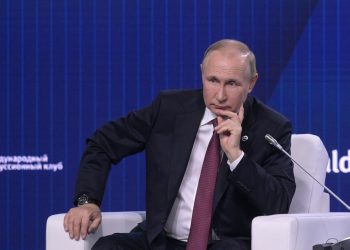US Department of Defense, WASHINGTON: China not only is a rising international economic power, but also is a rising military power with new and developing capabilities that have global implications, according to the 2008 China Military Power Report released today.
The annual report mandated by Congress analyzes China’s military development and strategy and says that the country spent as much as $139 billion, more than three times its announced defense budget, modernizing its military forces last year.
That amount dwarfs the military budgets of Russia, Japan and South Korea, and has been the driving force behind the country’s military transformation, fueled by the acquisition of advanced foreign weapons and far-reaching organizational and doctrinal reforms.
Combined with what Defense Department officials call a lack of transparency, the military development poses risks to stability by increasing the potential for misunderstanding and miscalculation, the report concludes.
“China’s military buildup has been characterized by opacity, but (there is an) inability by both people in the region and people around the world to really know what ties together the capabilities that China’s acquiring with the intentions it has,” said David Sedney, deputy assistant secretary of defense for East Asia. “So there are a lot of areas where there is misunderstanding. There are a lot of areas where there is lack of knowledge.”
The Chinese government generally protests the report, said Sedney, but this year the two sides have agreed to talk about their objections and officials hope to get more answers to their questions. This is the first time this has been done, he said.
“As China continues to grow and expand and influence the course of world events, it’s important for us to have a clear understanding,” Sedney said.
To date, the Chinese have invested in new generations of survivable nuclear missiles, capable of targeting the United States as well as regional powers; advanced short- and medium-range ballistic missiles; advanced attack and ballistic missile submarines; Russian aircraft and precision weaponry; multi-mission F-10 fighter aircraft; Russian guided missile destroyers; and modern, long-range, mobile air defense systems.
China’s near-term focus appears to be on Taiwan, but long-term trends suggest China is building a force scoped for operations beyond Taiwan, according to the report. China continues to deploy its most advanced weapons systems to the military regions opposite Taiwan. China’s military is developing capabilities for a number of different military options against Taiwan, including coercion, an air and missile campaign, blockade, and amphibious invasion, according to the report.
Of particular concern to Defense Department officials is the country’s ability to use cyberspace to attack computer networks. Several “intrusions” around the world in which a computer network is infiltrated and information gathered, Sedney said, have been sourced back to China. None of the intrusions were into classified material, Sedney said.
“While we are not able to definitively label them as the work of the (People’s Liberation Army) or the Chinese government, the techniques that were used, the way these intrusions are conducted are certainly very consistent with what you would need if you were going to actually carry out cyber warfare,” Sedney said.
But, overall, Sedney said, there is no one “big” change this year in the continued military growth in China.
“The real story is the continuing development, the continuing modernization, the continuing acquisition of capabilities and the corresponding and unfortunate lack of understanding, lack of transparency about the intentions of those and how they are going to be employed. What is China going to do with all that?” Sedney said.
Still, the overall U.S.-China defense relationship continues to improve, as demonstrated by extensive high-level visits in both directions; ship visits; and officer exchanges, including for mid- and junior-grade officers and between military education institutions, according to the report.
Defense Secretary Robert M. Gates met in November with Chinese Defense Minister Cao Gangchuan and said, “the United States has a relationship with China that is candid, constructive, and cooperative. Minister Cao and I discussed ways to build on positive momentum in our defense relations, and how to use these interactions to improve communications and reduce the risk of misunderstanding.”
On Feb. 29, the two countries agreed on establishing a telephone link between their respective defense departments. Officials believe the link will be operational this month. Still, U.S. officials would be more comfortable with China’s military expansion if it understood the country’s overall intentions, officials said.
“The United States welcomes the rise of a stable, peaceful, and prosperous China,” the report reads. “The United States continues to encourage China to participate as a responsible international stakeholder by taking on a greater share of responsibility for the stability, resilience and growth of the global system. However, much uncertainty surrounds China’s future course, in particular in the area of its expanding military power and how that power might be used.”
Pentagon report on China’s Military Power and Transcript of the Pentagon March 3 news conference on the report.
Iraq accuses Israel of seeking pretext for future attack
Iraq has accused Israel of attempting to legitimize an attack on its territory, after the Israeli foreign ministry protested to...









